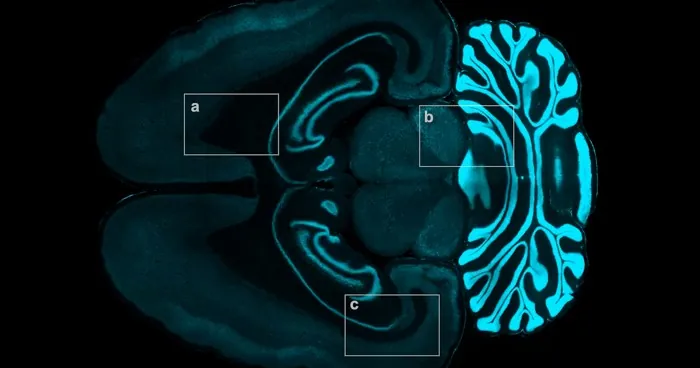
Revolutionary Technique Enables Researchers to Visualize Proteins in Dense Tissues!
2025-01-24
Author: Arjun
Groundbreaking Study from MIT
In a groundbreaking study, researchers from MIT have unveiled an innovative methodology that tackles the longstanding challenge of identifying specific proteins within dense tissues.
Historically, utilizing antibody labels in such settings has proven difficult due to the slow diffusion rates of antibodies. This has often led to uneven concentration at the tissue's edges, akin to a party-goer who becomes so engrossed in conversation by the entrance that they miss all the action happening deeper within the venue.
Innovative Methodology by Kwanghun Chung
Kwanghun Chung, a prominent chemical engineer at MIT and a pioneer of the well-known tissue-clearing technique known as CLARITY, is at the forefront of this new approach.
The novel method temporarily reduces antibody reactivity during the diffusion process through a meticulously controlled environment.
By creating a highly alkaline setting and introducing deoxycholic acid, researchers are able to inhibit binding between antibodies and their targets. This allows antibodies to traverse tissue more effectively.
Following this, a rotating electrical field is employed to expedite the movement of negatively charged proteins within the tissue, facilitating a more uniform distribution.
Restoration of Conditions
As the process progresses, deoxycholic acid is systematically removed through dialysis, and the acidity of the environment is adjusted through an oxidation reaction.
This careful restoration of conditions allows antibodies to regain their ability to bind to specific targets once they reach deeper tissue layers.
Applications and Implications
Excitingly, this method has been successfully applied to label single-cell neurons in whole, intact rat brains.
This leap forward also enables scientists to study multiple protein targets simultaneously in various biological contexts, including brains, organs, and even entire embryos.
Challenges Ahead
However, the researchers acknowledge that while this technique could revolutionize our understanding of complex biological systems, particularly in larger samples like a whole human brain, there is still a noteworthy challenge to address: dissipation of excess heat generated during the electrotransport process.
Conclusion
This groundbreaking advance opens up new possibilities for examining dense tissues in ways never before possible, potentially accelerating research in neural science, pathology, and regenerative medicine.
Prepare to witness a paradigm shift in biomedical imaging! Stay tuned for more updates on this exciting development!


 Brasil (PT)
Brasil (PT)
 Canada (EN)
Canada (EN)
 Chile (ES)
Chile (ES)
 Česko (CS)
Česko (CS)
 대한민국 (KO)
대한민국 (KO)
 España (ES)
España (ES)
 France (FR)
France (FR)
 Hong Kong (EN)
Hong Kong (EN)
 Italia (IT)
Italia (IT)
 日本 (JA)
日本 (JA)
 Magyarország (HU)
Magyarország (HU)
 Norge (NO)
Norge (NO)
 Polska (PL)
Polska (PL)
 Schweiz (DE)
Schweiz (DE)
 Singapore (EN)
Singapore (EN)
 Sverige (SV)
Sverige (SV)
 Suomi (FI)
Suomi (FI)
 Türkiye (TR)
Türkiye (TR)
 الإمارات العربية المتحدة (AR)
الإمارات العربية المتحدة (AR)